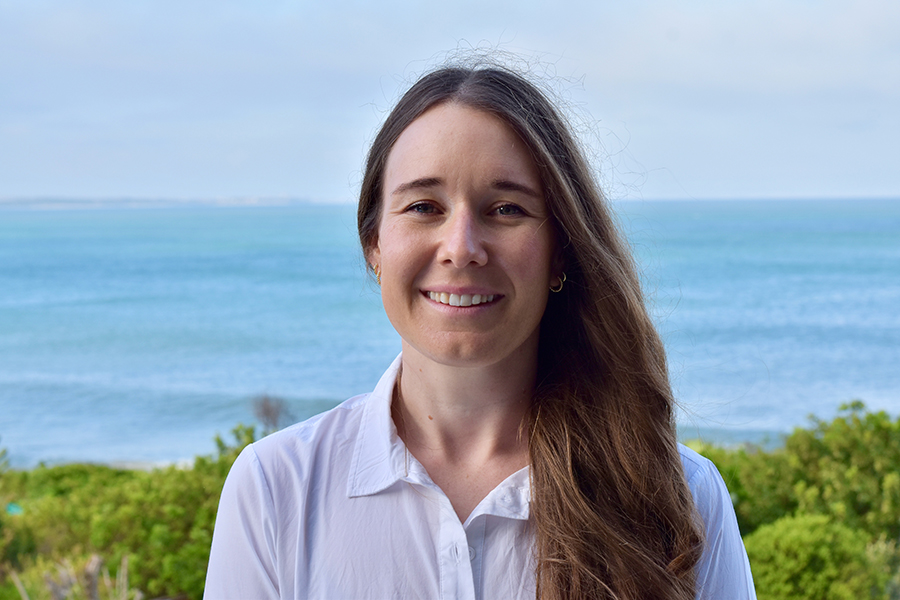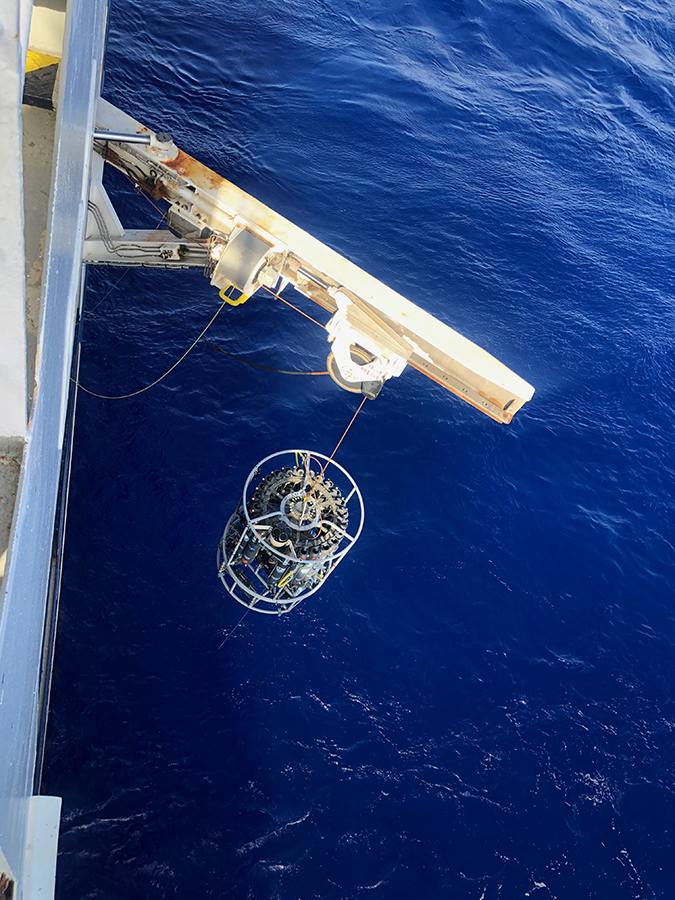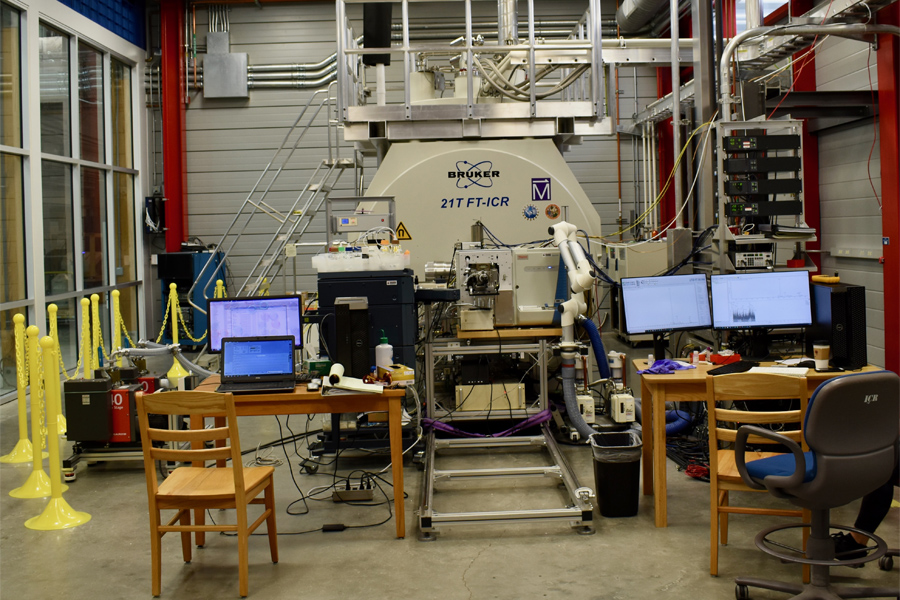On land, plants absorb carbon dioxide, converting it into organic matter and oxygen through photosynthesis. This same process is performed by tiny, ocean-dwelling plants called phytoplankton, which establish the base of the complex marine food web. The organic matter produced in this system ranges from microscopic particles unable to be seen with the naked eye to particles as thick as a nickel.
“Some of these particles sink from the sunlit surface into the ocean’s depths, effectively removing carbon from the atmosphere and storing it for decades to millennia,” Forrer said. “However, as this organic matter descends, it undergoes complex transformations that have long puzzled scientists. Understanding these changes is critical, as the rate and extent to which they occur determine how long this carbon is locked away.”
These transformations are driven by microorganisms, or microbes, which influence organic matter’s sinking rate by reshaping or degrading the particles. The research team collected sinking particles from the Gulf, California Current Ecosystem and tropical Indian Ocean to examine molecular changes as they descend into the deep ocean.
MAGLAB RESEARCH
“Heather is an incredibly driven and intelligent early career scientist,” said Michael Stukel, EOAS chair and study co-author. “This publication is crucial to understanding the biological carbon pump and places our department at the vanguard of the field. It also highlights the incredible science that can be done in collaboration with other FSU departments and centers, such as the FSU-headquartered National High Magnetic Field Laboratory, which allowed us to characterize organic matter in sinking particles at a previously unseen level.”
Using the National MagLab’s advanced ultrahigh-resolution mass spectrometer — which harnesses a powerful magnetic field to identify molecules with extreme precision — the researchers were able to, for the first time, directly compare the molecular composition of sinking particles collected in different ocean regions at different depths. They found that in nutrient-rich regions like California’s upwelling region, where particles are produced and sink quickly, more “fresh” carbon reached greater depths with very little molecular change, suggesting a strong carbon sequestration pathway. By contrast, nutrient-poor regions like the Gulf feature slower-sinking particles, which are more extensively processed by microbes, showing greater molecular changes since formation and contributing less effectively to carbon storage.
“These topics, as foreign as they may seem, are intimately connected to our everyday lives,” Forrer said. “The air we breathe and Earth’s climate are largely controlled by the ocean and the processes investigated in this publication. By better understanding these fine-scale processes, we can gain a clearer picture of how the ocean functions today and more accurately predict how resilient these marine carbon storage pathways are in a warming world.”




